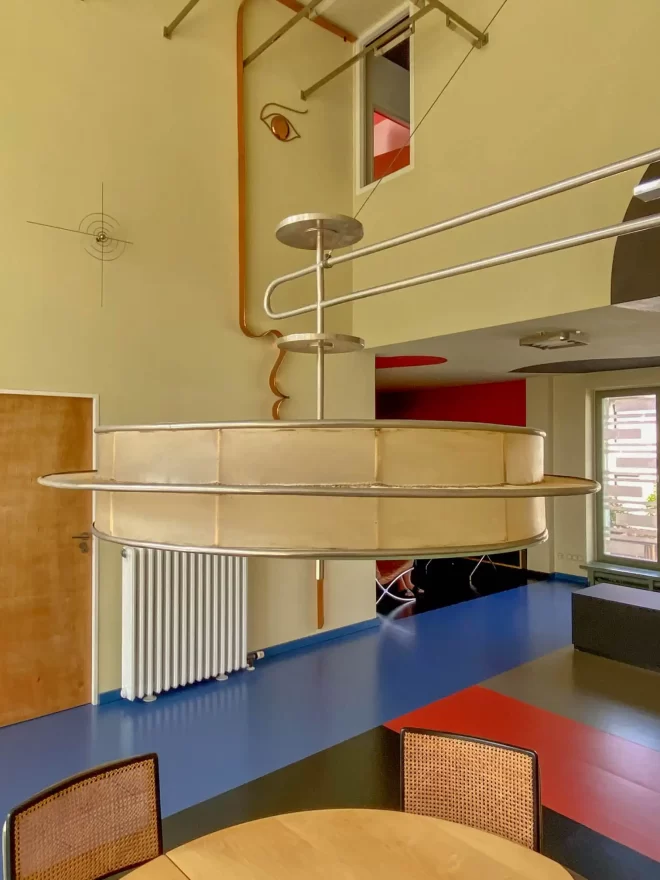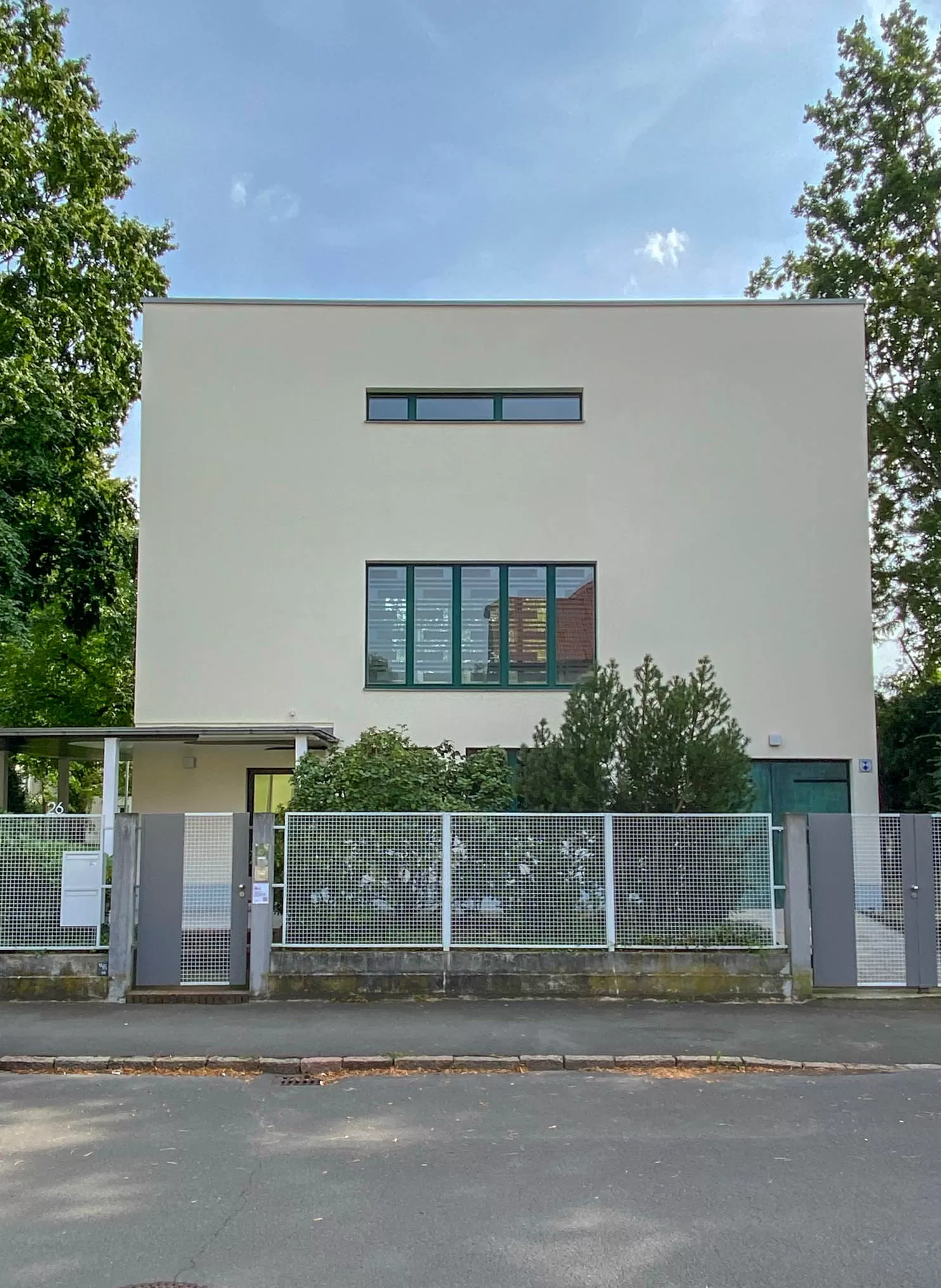
Haus Rabe, 1929-1930. Architect: Adolf Rading. Photo: Daniela Christmann
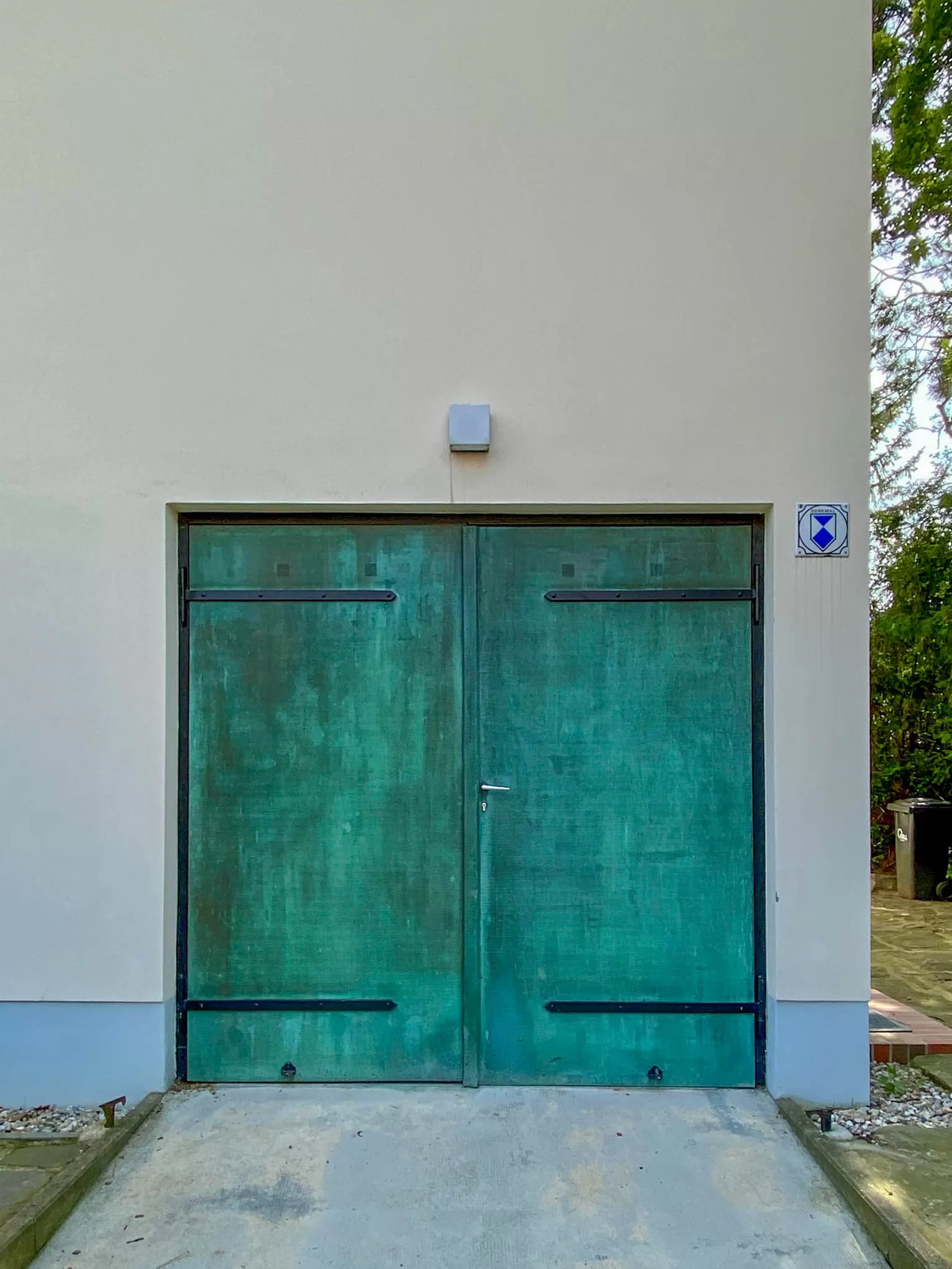
Haus Rabe, 1929-1930. Architect: Adolf Rading. Photo: Daniela Christmann
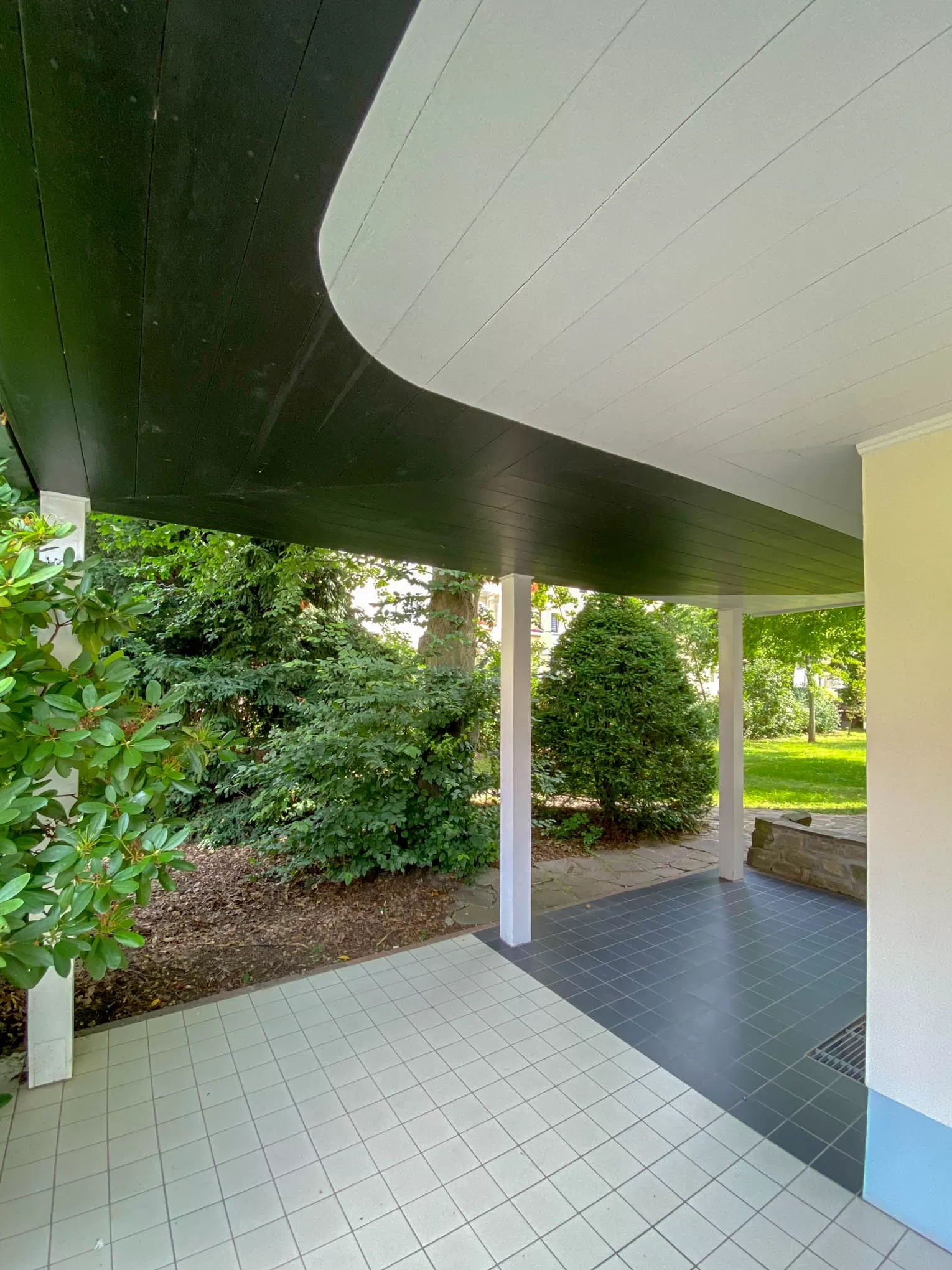
Haus Rabe, 1929-1930. Architect: Adolf Rading. Photo: Daniela Christmann
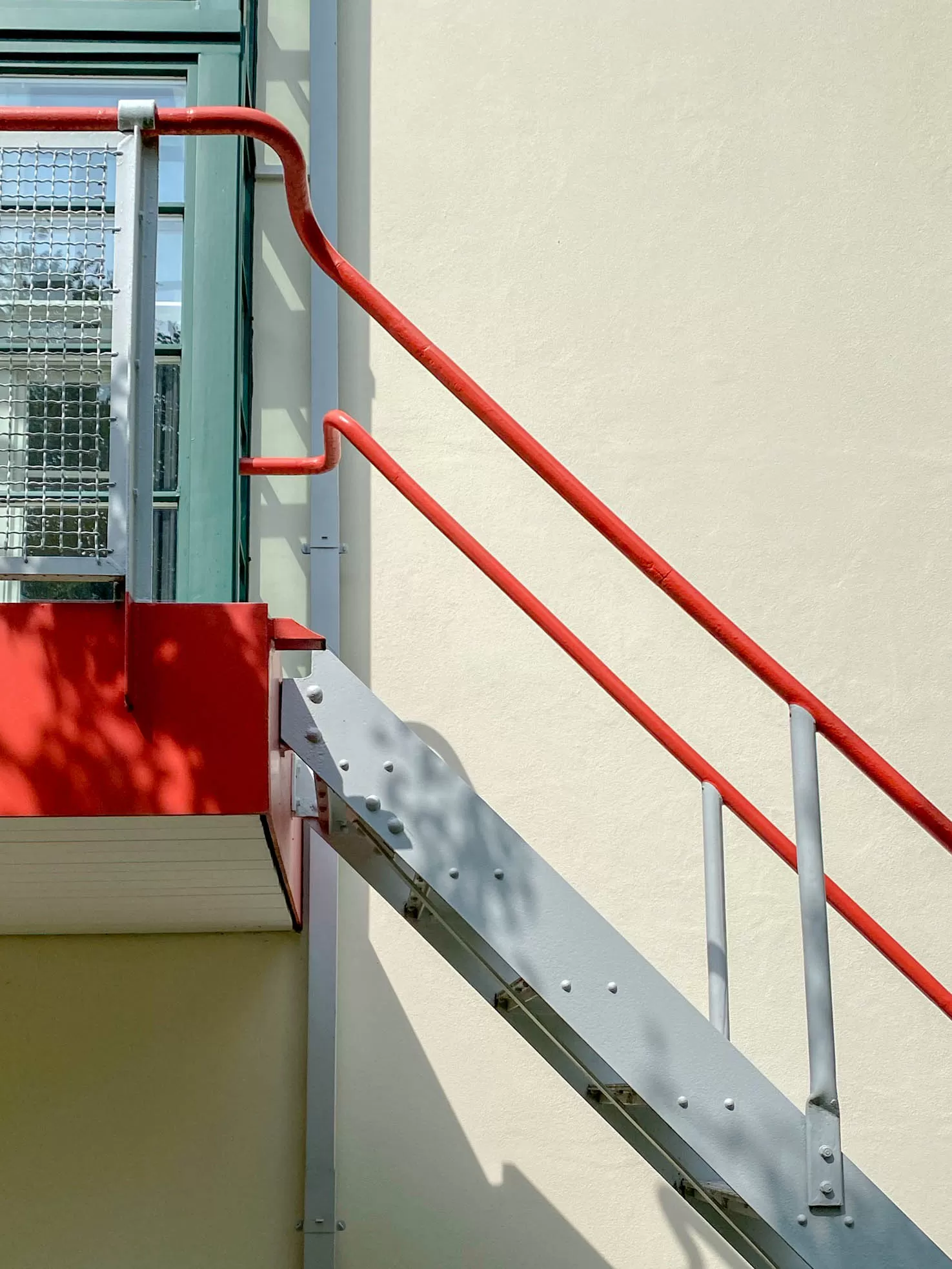
Haus Rabe, 1929-1930. Architect: Adolf Rading. Photo: Daniela Christmann
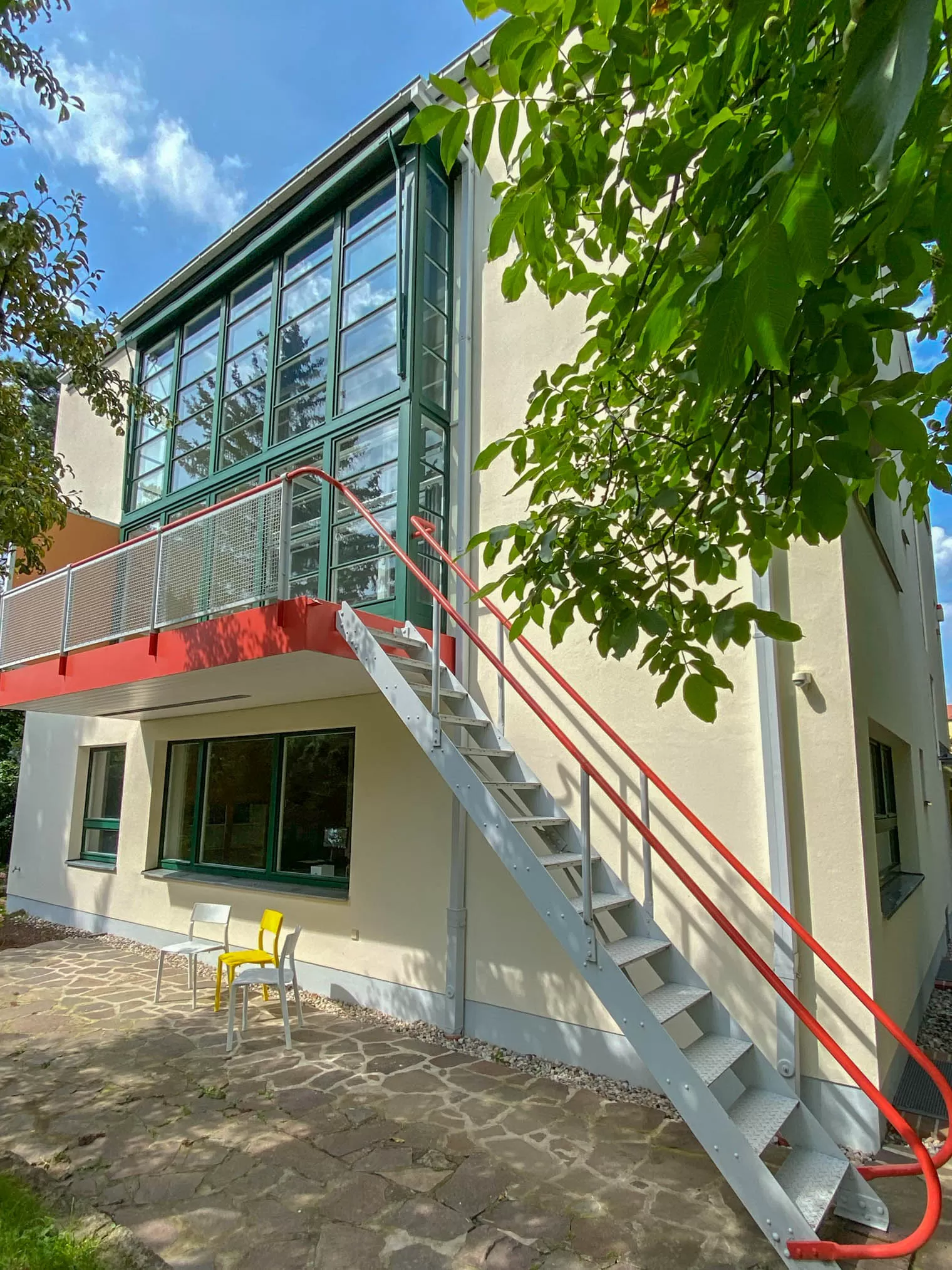
Haus Rabe, 1929-1930. Architect: Adolf Rading. Photo: Daniela Christmann
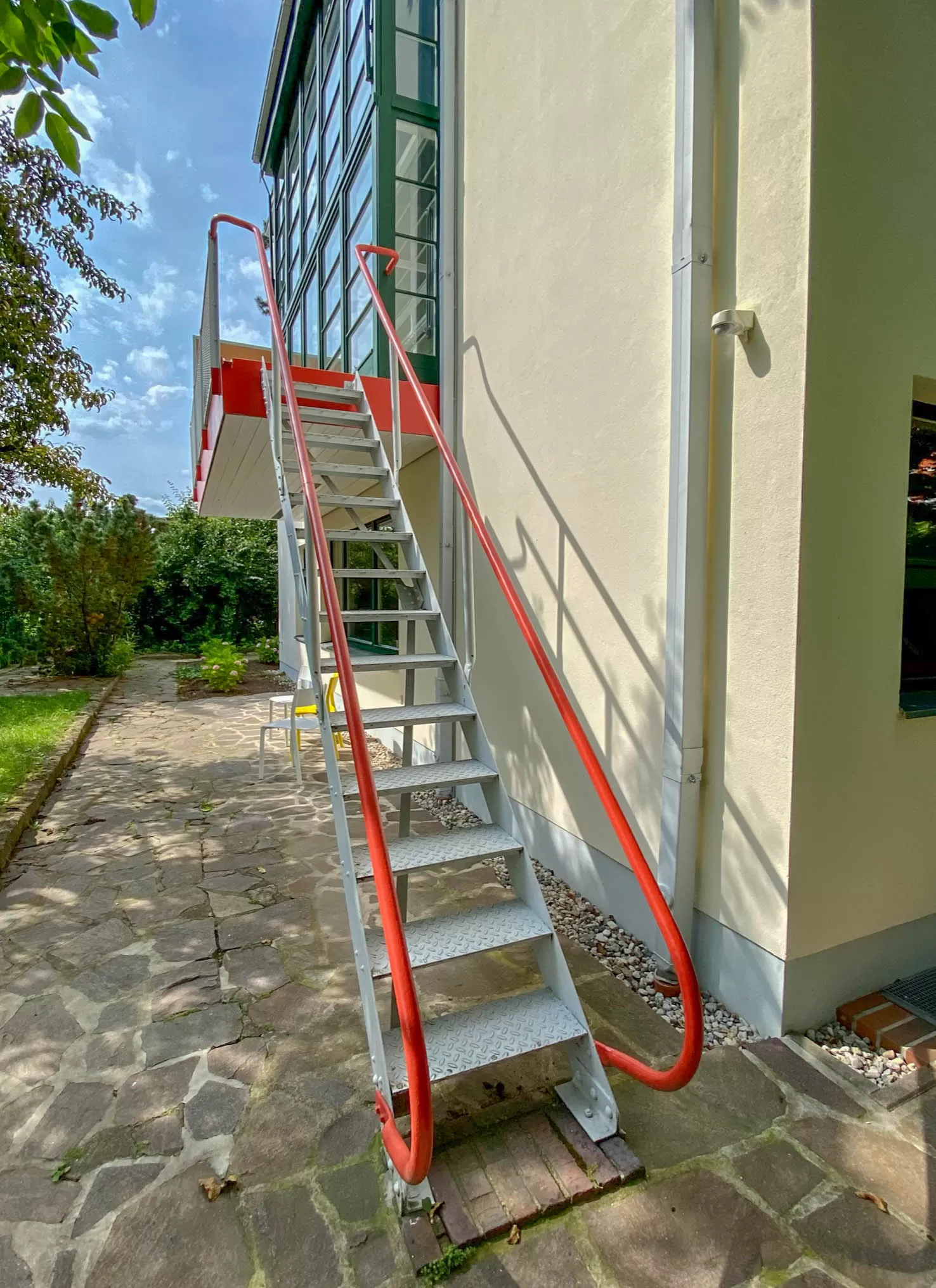
Haus Rabe, 1929-1930. Architect: Adolf Rading. Photo: Daniela Christmann
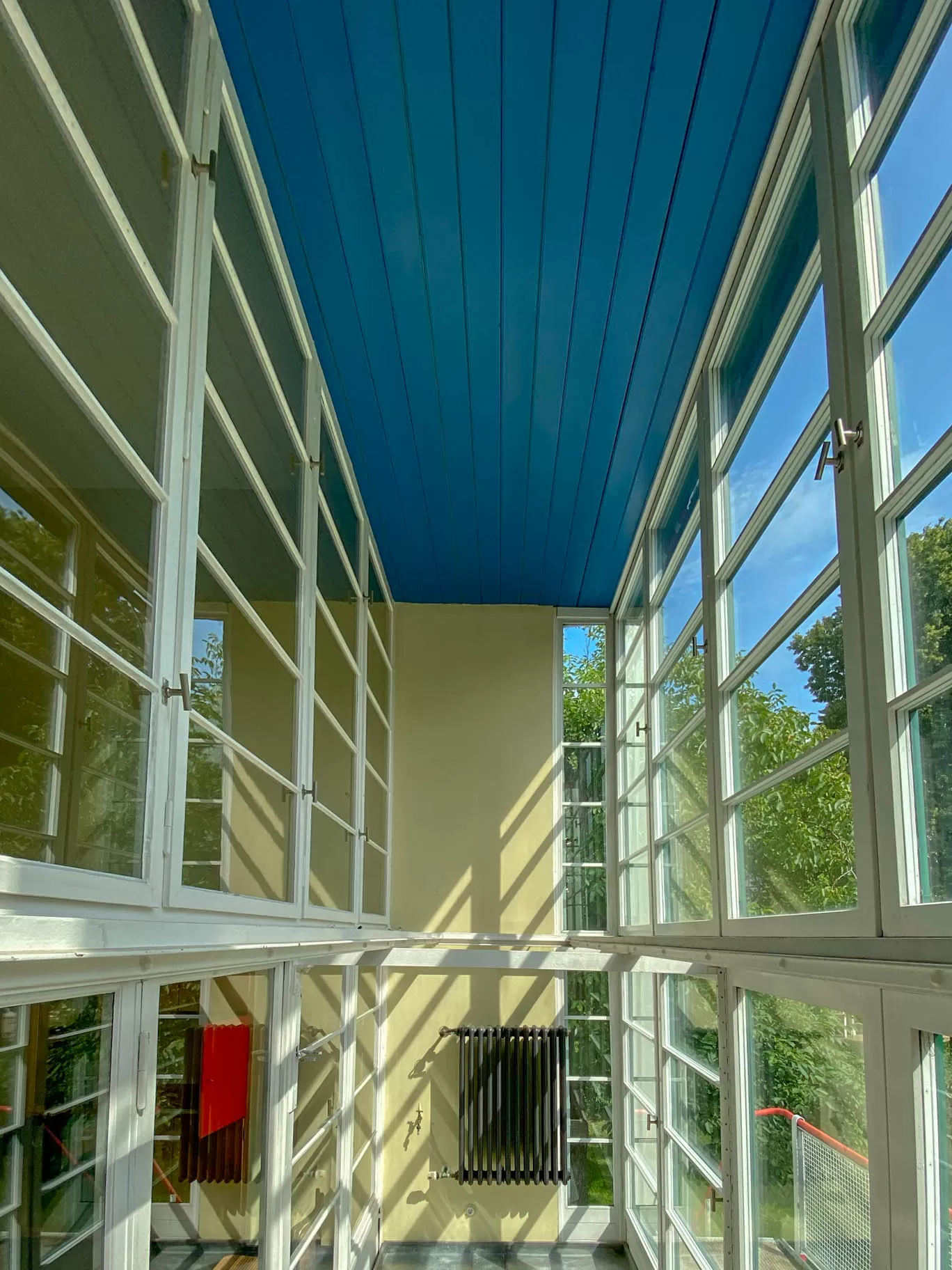
Haus Rabe, 1929-1930. Architect: Adolf Rading. Photo: Daniela Christmann
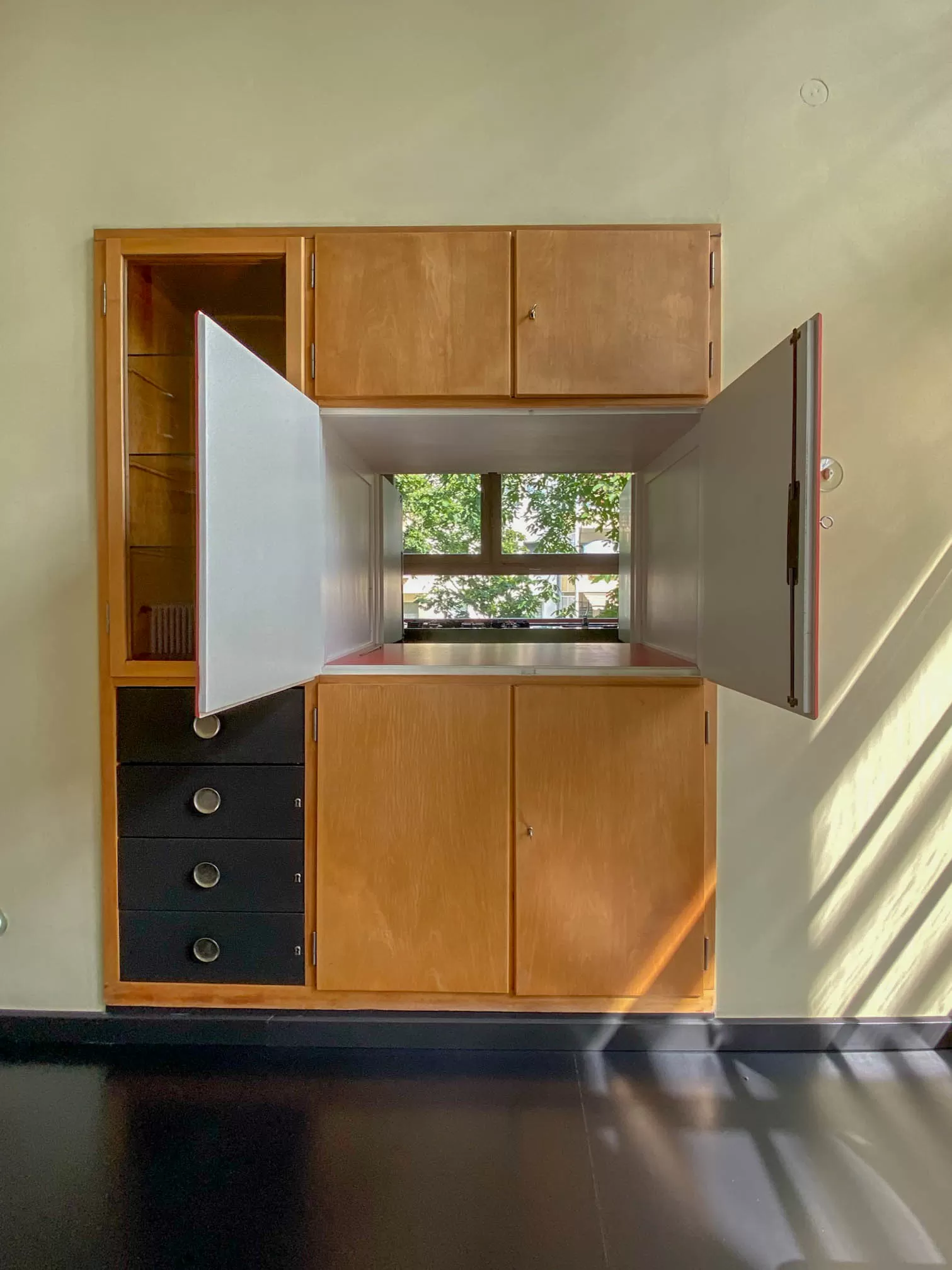
Haus Rabe, 1929-1930. Architect: Adolf Rading. Photo: Daniela Christmann
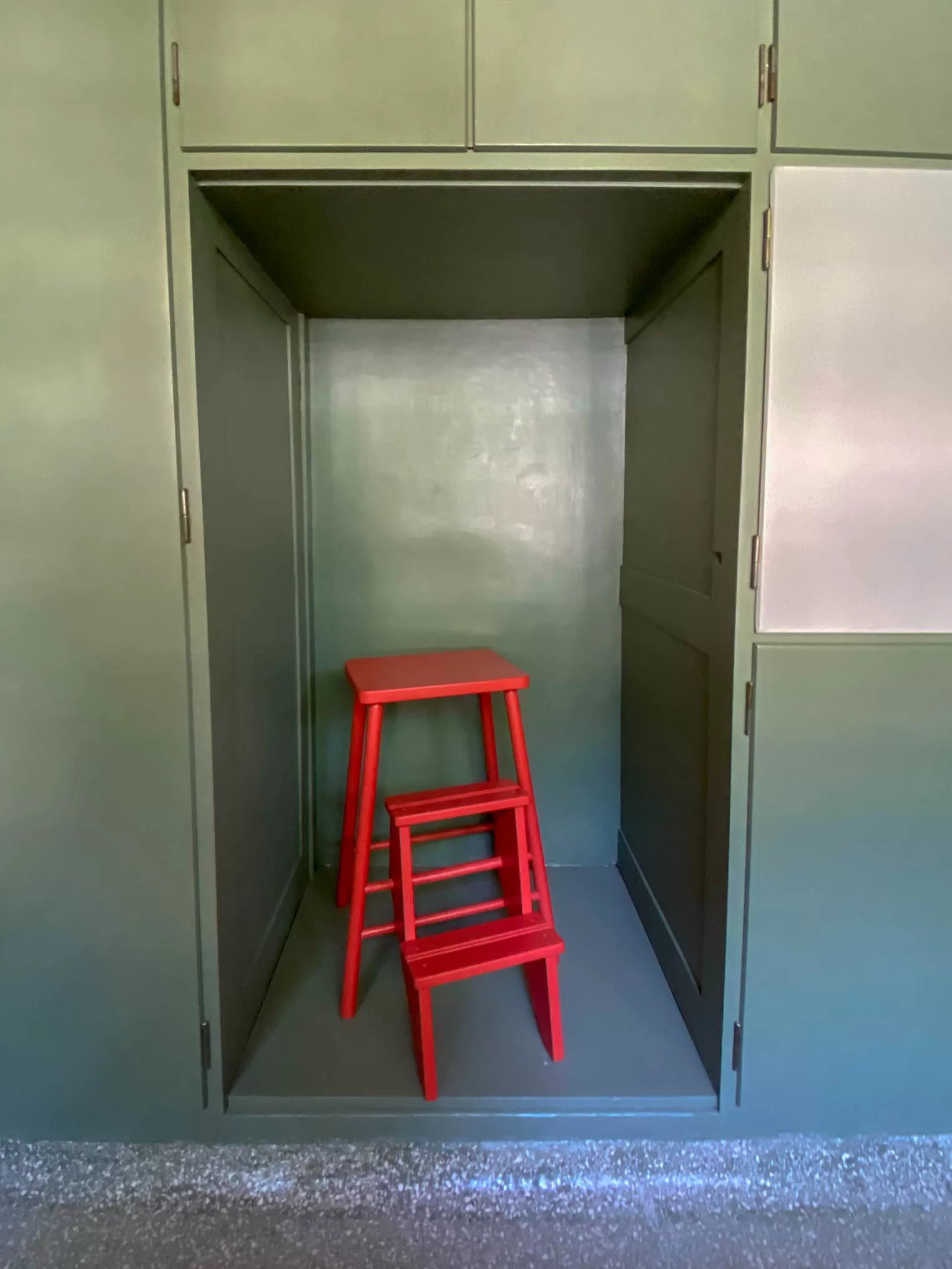
Haus Rabe, 1929-1930. Architect: Adolf Rading. Photo: Daniela Christmann
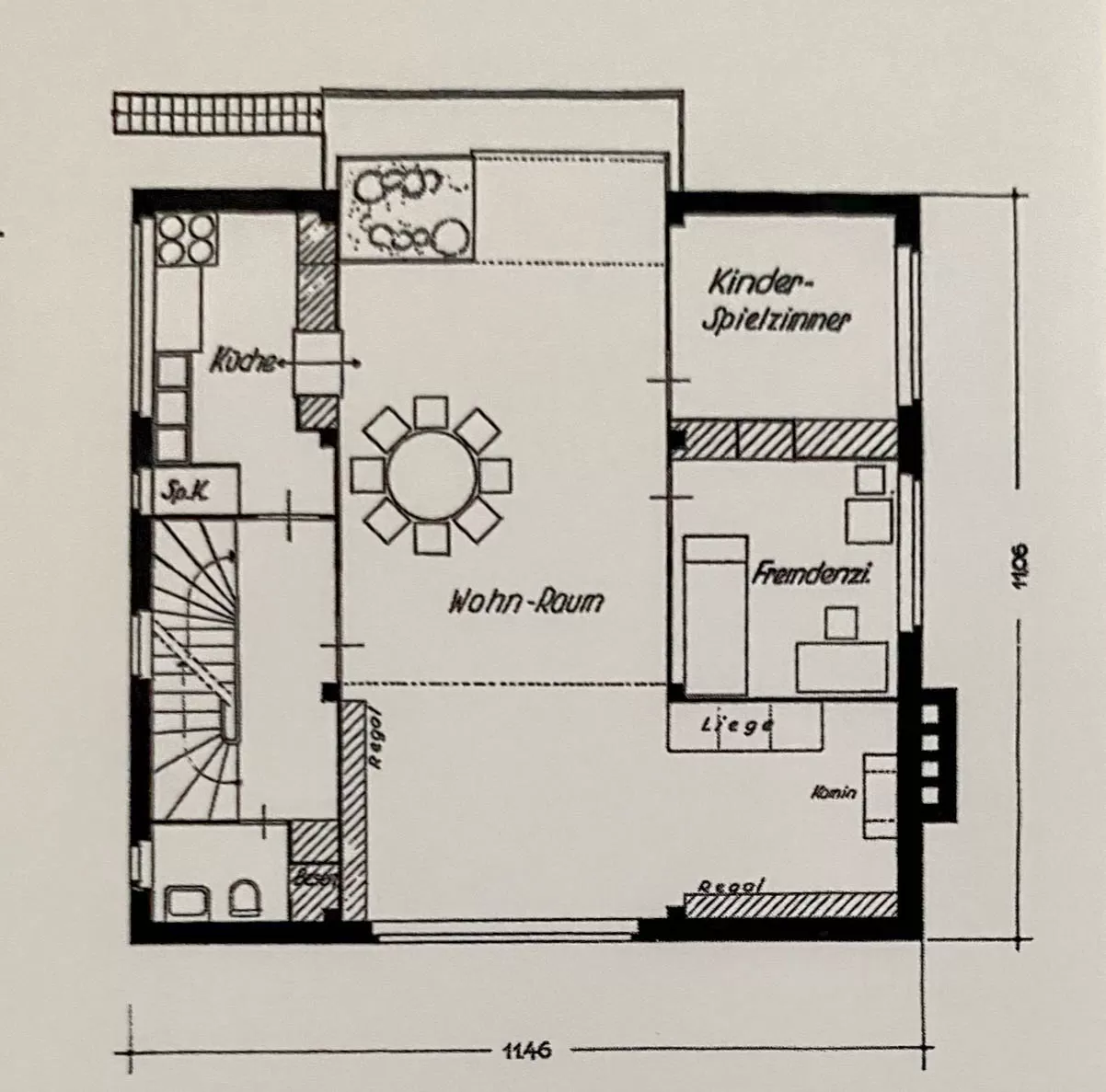
Haus Rabe, 1929-1930. Architect: Adolf Rading
1929 – 1930
Architect: Adolf Rading
Ebertstrasse 26, Zwenkau, Germany
The residential building with a doctor’s office was built between 1929 and 1930 according to plans by architect Adolf Rading for the medical doctor Dr. Erich Rabe and his wife Erna in Zwenkau. For the interior design, Rading worked closely with the artist and master of the Bauhaus Oskar Schlemmer.
Adolf Rading
Adolf Rading usually got to know his clients through private relationships. This was also the case with the commission for the Rabe house. Erna Rabe was a school friend of Else Leschnitzer, whom Adolf Rading had married in 1928.
After Rading’s projects for the Werkbund exhibitions in Stuttgart and Breslau, the private Rabe residence opened up design possibilities that he was able to realize together with Oskar Schlemmer in the sense of a Gesamtkunstwerk.
Design
The design of the three-storey cubic single-family house on the property at Ebertstrasse 26 initially met with rejection from the neighborhood and, above all, from the approval authorities. The building permit was finally granted, among other reasons, because the street façade was to be predominantly concealed by trees.
The first floor of the house contained the practice and waiting rooms, which could be reached via a separate entrance, as well as the garage and a small apartment for house staff.
Rading’s living concept for the Rabe house developed around a central hall, extending over two floors, with large window areas facing the street and garden.
Towards the garden, the living room is preceded by a winter garden with veranda directly connected to it via a staircase.
Interior
The central living hall occupies the entire depth of the house. The glass of the large window front facing the street is etched with a geometric pattern that prevents unwanted views.
Adjacent to the living hall are kitchen and washrooms, as well as guest and children’s playrooms. On the street side of the living hall, a niche houses a fireplace nook with a library.
Adolf Rading designed the floor plan, the room layout and the color concept for the residential building. Oskar Schlemmer took over the artistic design and interior decoration of the house.
According to Rading’s specifications, red doors and a large-scale, geometrically patterned floor covering of blue, gray, black, and red linoleum were set as a contrast to the light, olive-green walls of the living hall.
Rading provided the ceiling above the fireplace niche with geometric surfaces in black, gray and white colors.
Artwork
The four-part metal composition by Oskar Schlemmer, extending over two floors and consisting of the elements ‘Homo, figure T’ as well as a relief figure, an axial cross and a head in profile, is preserved in its original state. It is illuminated by a contemporary tubular lamp design.
The wire sculpture ‘Homo, Figur T’ goes back to an ink drawing from 1919/20, which Schlemmer had made at the Bauhaus in Weimar.
Slightly altered, it formed the model for the wall decoration in Haus Rabe, whose five-meter-high profile head is formed from a band of sheet copper.
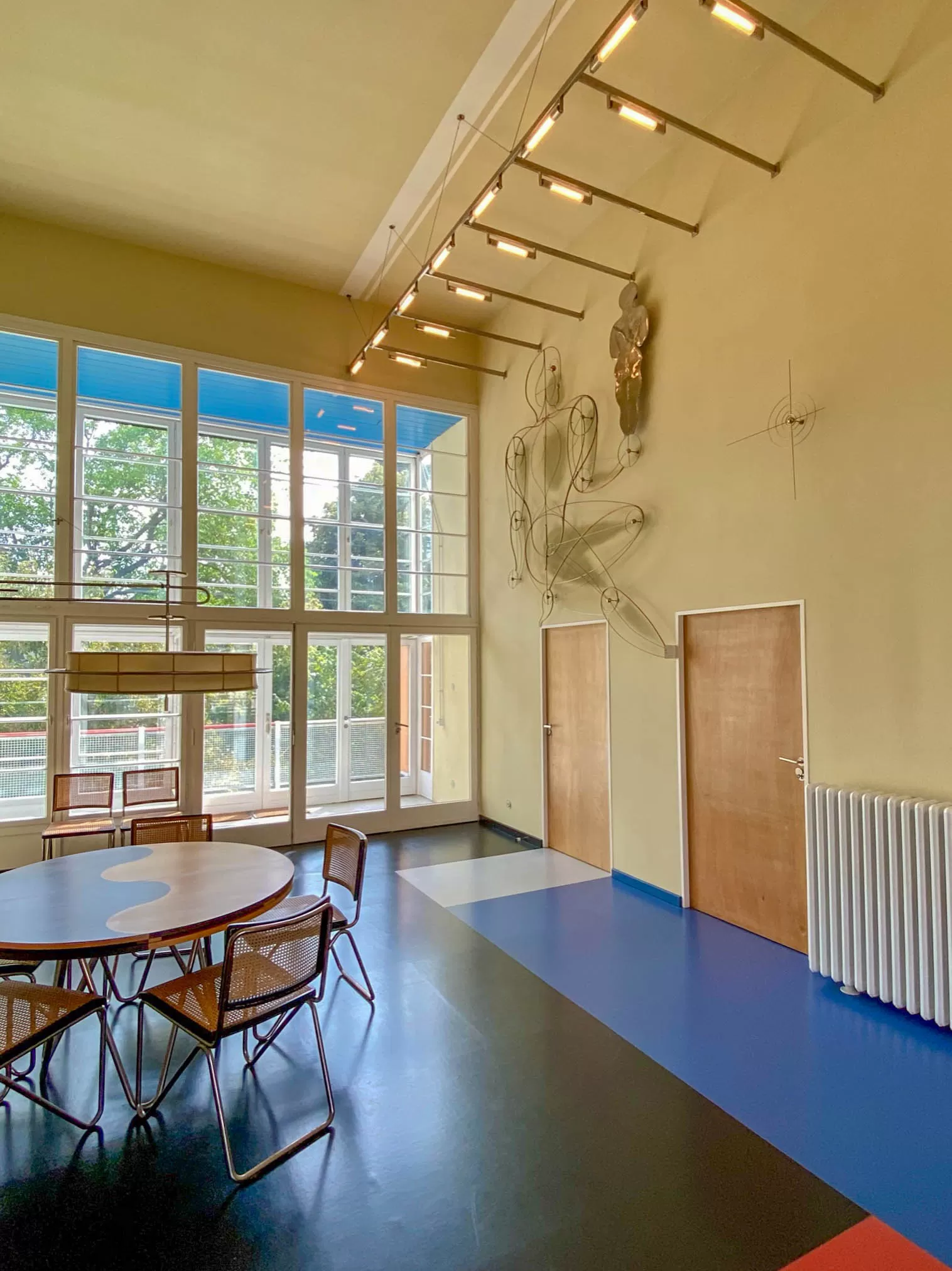
Haus Rabe, 1929-1930. Architect: Adolf Rading. Artistic design: Oskar Schlemmer. Photo: Daniela Christmann
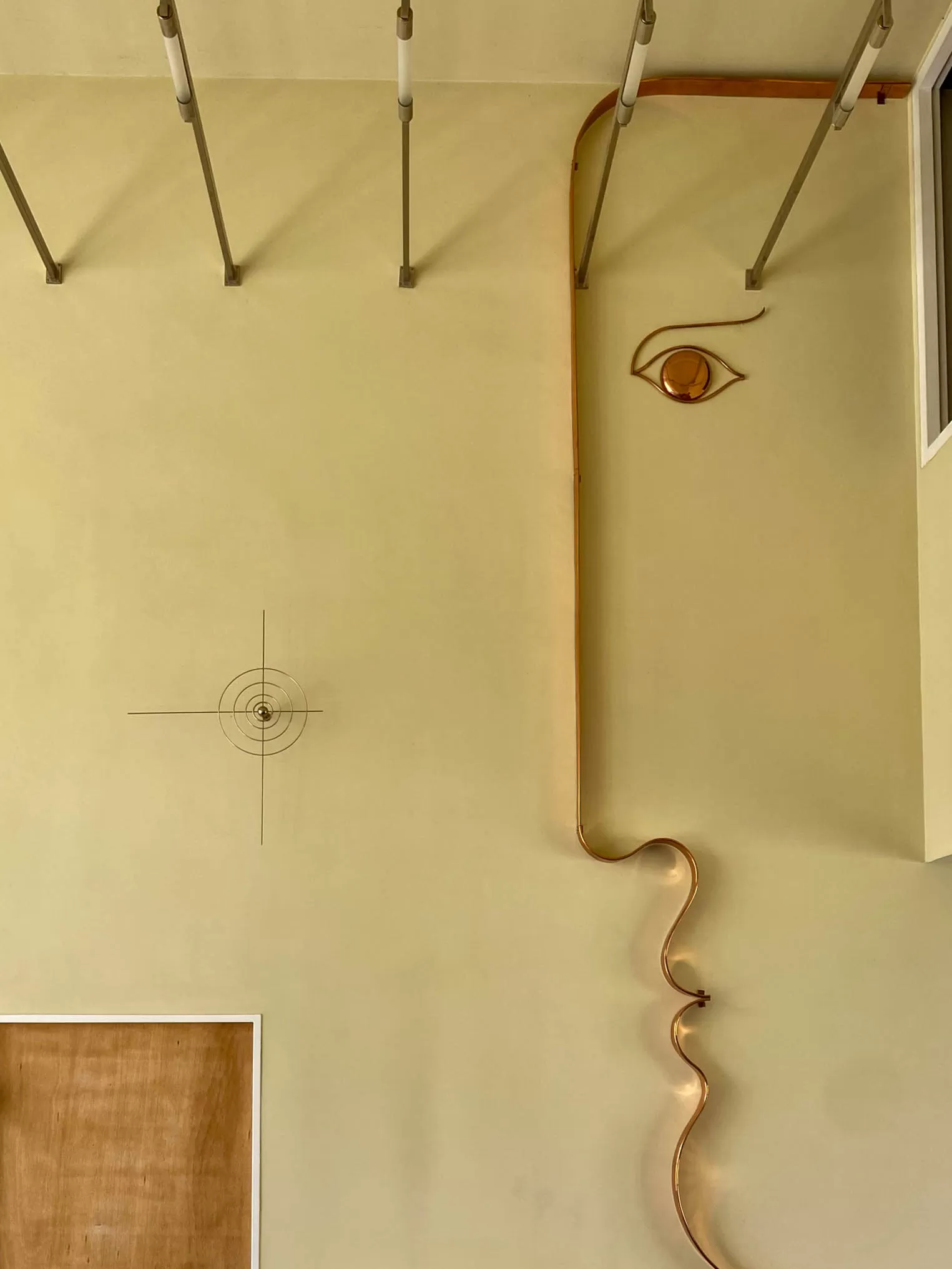
Haus Rabe, 1929-1930. Architect: Adolf Rading. Artistic design: Oskar Schlemmer. Photo: Daniela Christmann
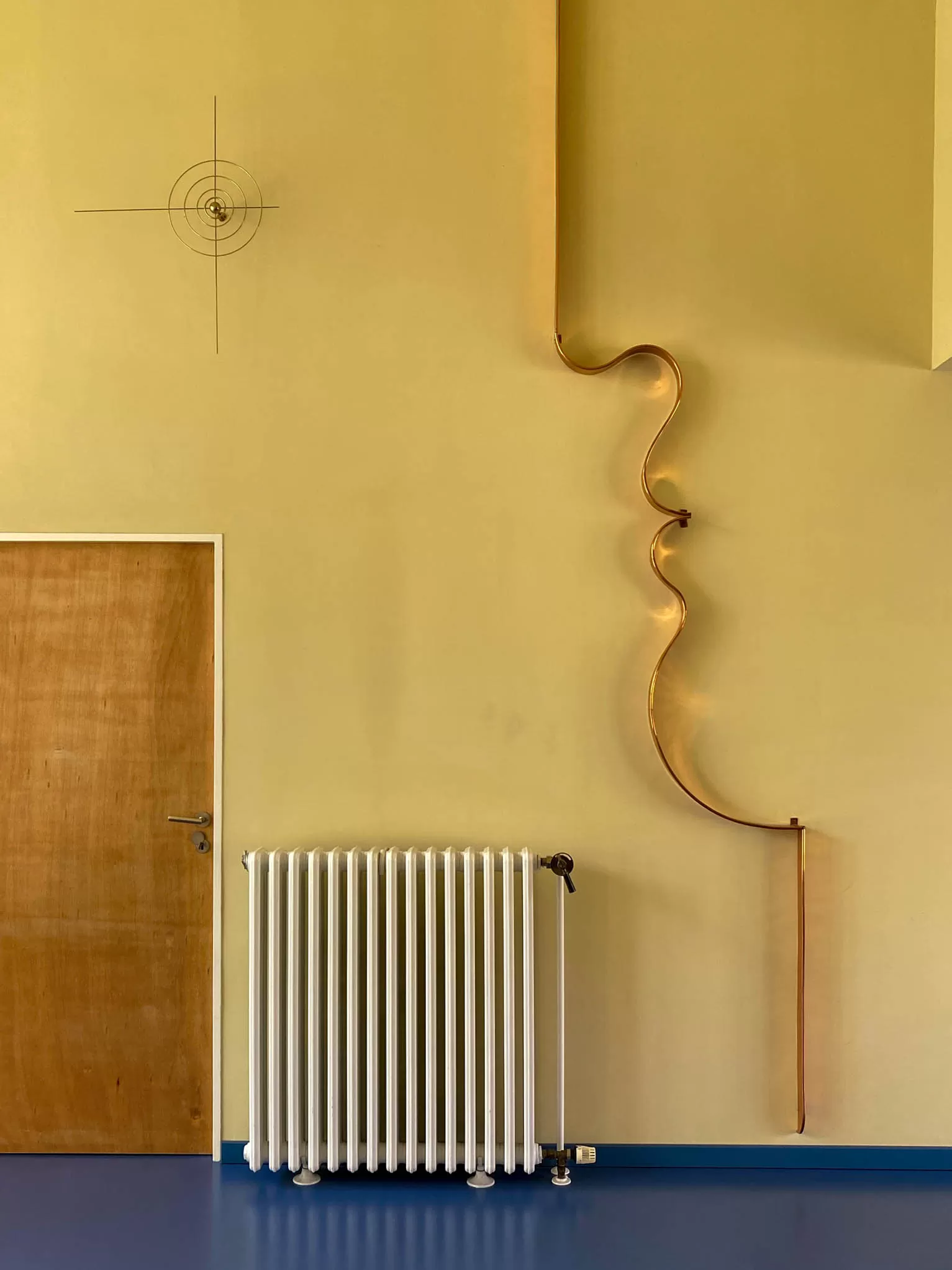
Haus Rabe, 1929-1930. Architect: Adolf Rading. Artistic design: Oskar Schlemmer. Photo: Daniela Christmann
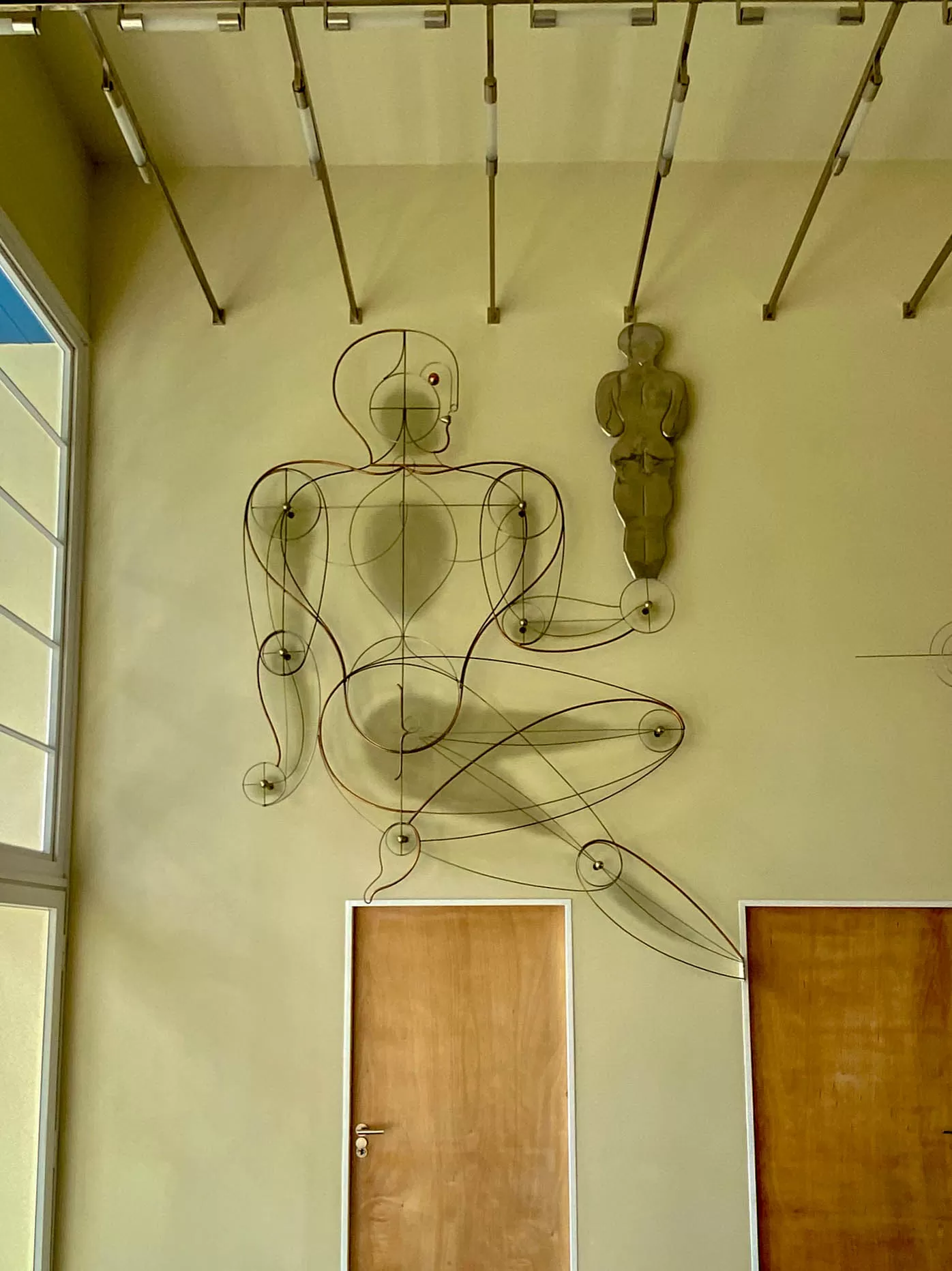
Haus Rabe, 1929-1930. Architect: Adolf Rading. Artistic design: Oskar Schlemmer. Photo: Daniela Christmann
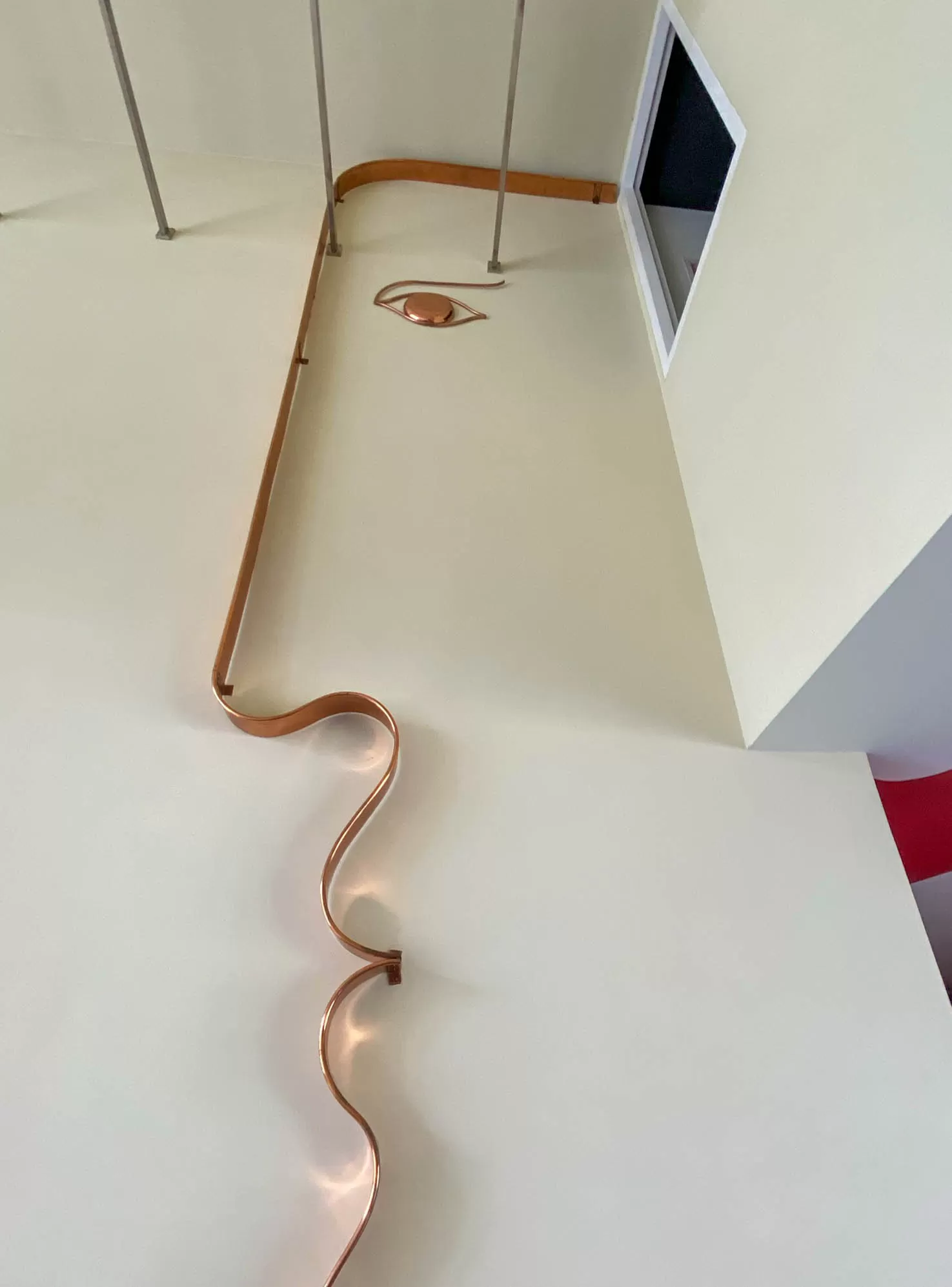
Haus Rabe, 1929-1930. Architect: Adolf Rading. Artistic design: Oskar Schlemmer. Photo: Daniela Christmann
Interiordesign
As furniture for the living hall Rading originally planned filigree tubular steel furniture with black fabrics. Above the round dining table is installed cantilevered adjustable lamp structure mounted on the wall.
On the upper floor of the house were the private rooms of the family and a room for the nursemaid.
The upper floor is reached by a staircase, which is decorated by a three-part mural by Oskar Schlemmer that extends over two floors.
On the staircase is a profile head, the outline of which traces the rotation of the staircase banister.
Oskar Schlemmer
Next to the vertical band of windows in the staircase, Schlemmer drew a caryatid extending over two stories. The transition to the upper floor is marked by a stretched, dancing half-figure.
On the street side, the children’s room was arranged with a passage to the family bathroom.
A second exit leads from the bathroom to the parents’ bedroom. There, the colors red and white dominate the walls, ceilings and floor, to which the bed in black contrasts.
After the building was completed, the Rabe couple lived and worked in the house until 1965, when their daughter Gabriele Schwarzer took over the medical practice.
Renovation and Current Use
In 1994, the patron of the arts Horst Schmitter bought the building and had the house, which was still almost in its original condition, renovated by the office of Albert Speer & Partner in the years 1995 to 1996 in accordance with the preservation order.
Nowadays the monument has been taken over by the Leipzig Cultural Foundation. Between 2017 to 2018, the house was again renovated and is now open to the public.
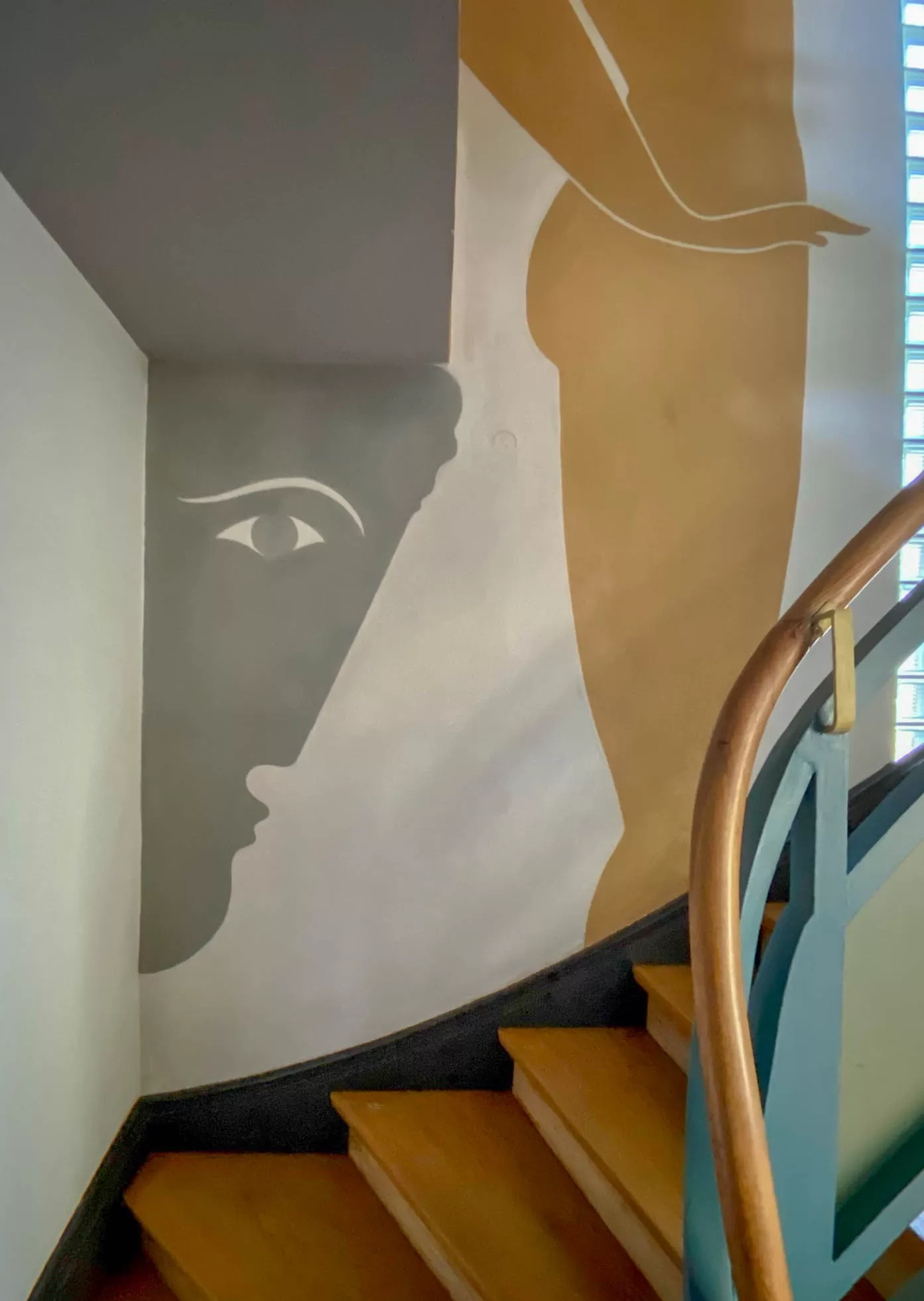
Haus Rabe, 1929-1930. Architect: Adolf Rading. Artistic design: Oskar Schlemmer. Photo: Daniela Christmann
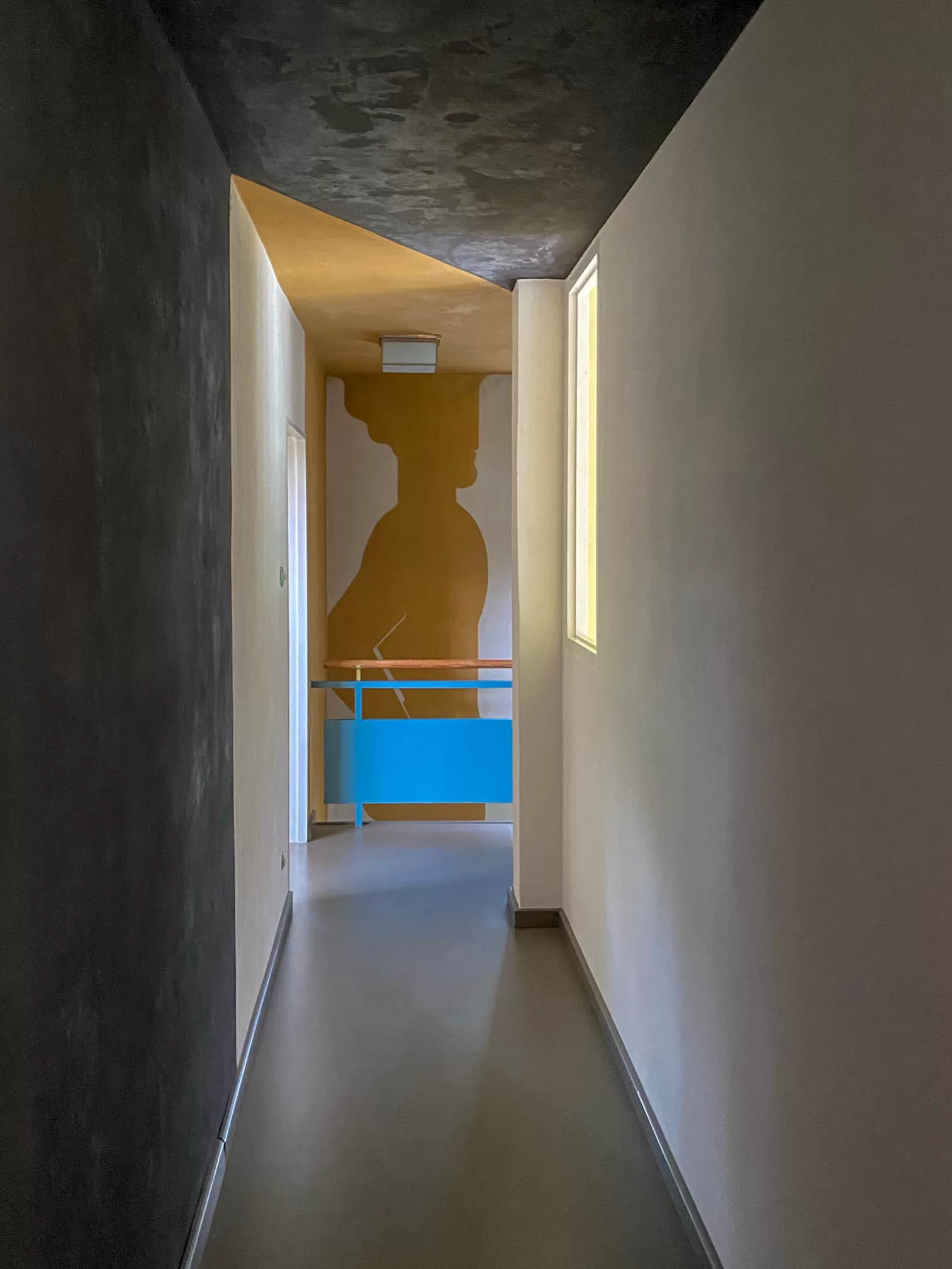
Haus Rabe, 1929-1930. Architect: Adolf Rading. Artistic design: Oskar Schlemmer. Photo: Daniela Christmann
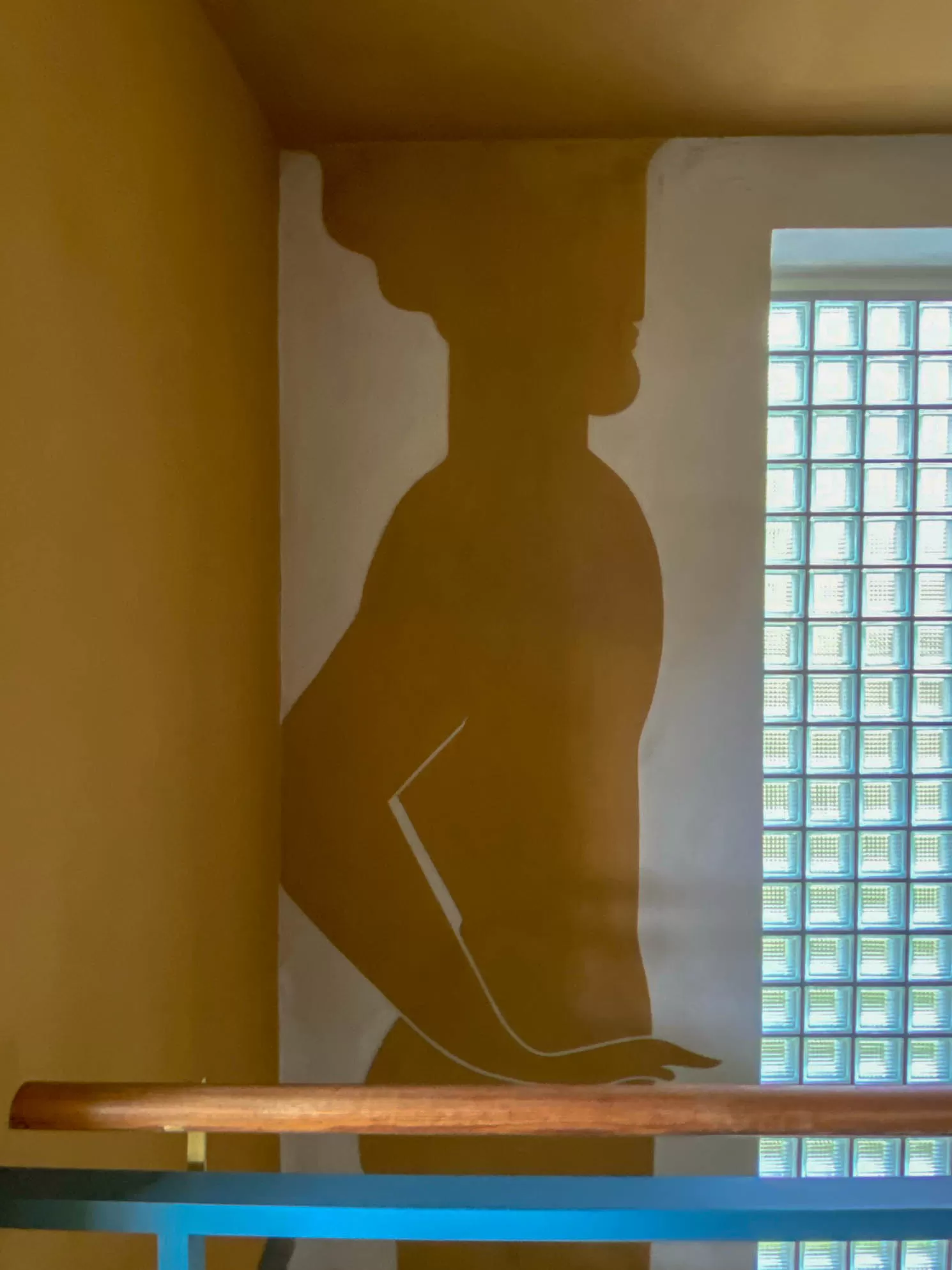
Haus Rabe, 1929-1930. Architect: Adolf Rading. Artistic design: Oskar Schlemmer. Photo: Daniela Christmann
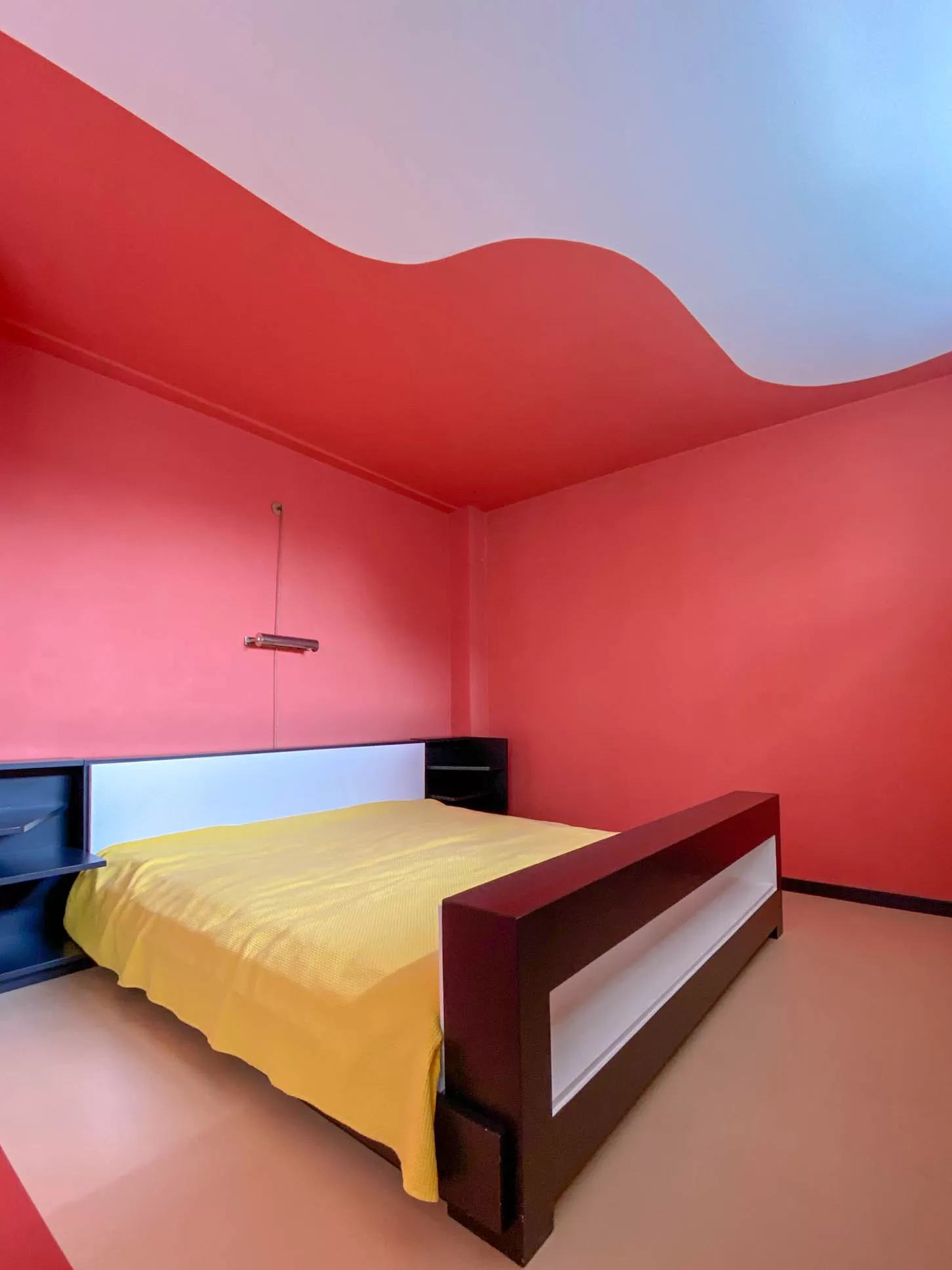
Haus Rabe, 1929-1930. Architect: Adolf Rading. Photo: Daniela Christmann

